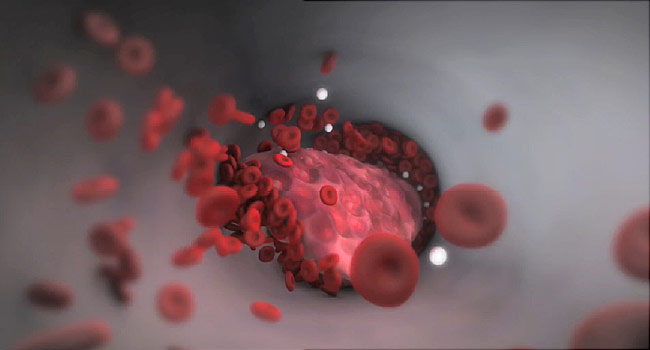Everything You Need to Know About Pulmonary Embolisms

A pulmonary embolism (PE) is categorized as a blockage within one of the pulmonary arteries in the lung. The lung arteries are what your body uses to make oxygenated blood. If the arteries are blocked, then your overall health suffers.
The blockage or PE is caused by blood clots that travel to the lungs from other regions of the body. The clots build up and restrict the flow of blood to the affected areas of the lungs.
What are the risk factors of PE?
If you believe you might be at risk for a pulmonary embolism, then you should be aware of the most common risk factors:
- DVT (deep vein thrombosis)
- Sitting or standing for long periods
- Plane travel
- Pregnancy
- Smoking
- Obesity
- Some types of medication such as birth control
Also, if you have a family history of blood clots, then it is vital for you to conscious of the risk factors.
What Type of Doctor Treats PE?
If you are at risk for a pulmonary embolism, then you need to speak with a doctor who specializes in treating PE. Vascular surgeons and Pulmonologists treat PE. Pulmonologists are specialists that treat all manner of lung conditions from Asthma to PE. You can start by visiting your primary care doctor, who will refer you on to a specialist.
What are the Signs and Symptoms of PE?
More than half of pulmonary embolism sufferers don’t know they have one. If you are at risk for a PE, then you should know what signs and symptoms to look out for. The signs and symptoms of a potential pulmonary embolism include:
- Shortness of breath
- Chest pain
- Coughing up blood
- Swelling
- Pain in your legs
- Warmth of the calf
- Lightheadedness or low oxygen levels
- Heart palpitations
- Dry cough
If you suspect, you have an embolism seek treatment now.
How Do You Treat a Pulmonary Embolism?
Doctors can treat pulmonary embolisms in several manners depending on the severity of the condition. The most common treatments and therapy for PE include:
- Blood thinners to break down the clot
- Catheter therapy
- Suctioning to remove thrombosis
- Surgery and other forms of treatment for PE
Dependent on your medical history, non-pharmacological options are available to treat PE. It is important to note that PE may clear on its own, but for best results, it is best to seek medical treatment for PE. Even after successful treatments, the lungs can suffer permanent damage as a result of the blockage.
What is the Prognosis of Embolism Sufferers?
The survival rate among PE patients is hope for those who catch the embolism quickly. The survival rate of short-term sufferers is 95-97%, and for those with more severe cases, the survival rates are between 61-75%.
With a proper and early treatment of PE, the outlook for survival is promising. It is only in patients who do not seek treatment or whose PE is too advanced that death can occur. With proper treatment, the prospects are optimum for survival.
Final Note
If you have PE or you suspect it, please seek treatment now. Don’t risk your life by avoiding the issue, call your doctor today, it may save your life.
